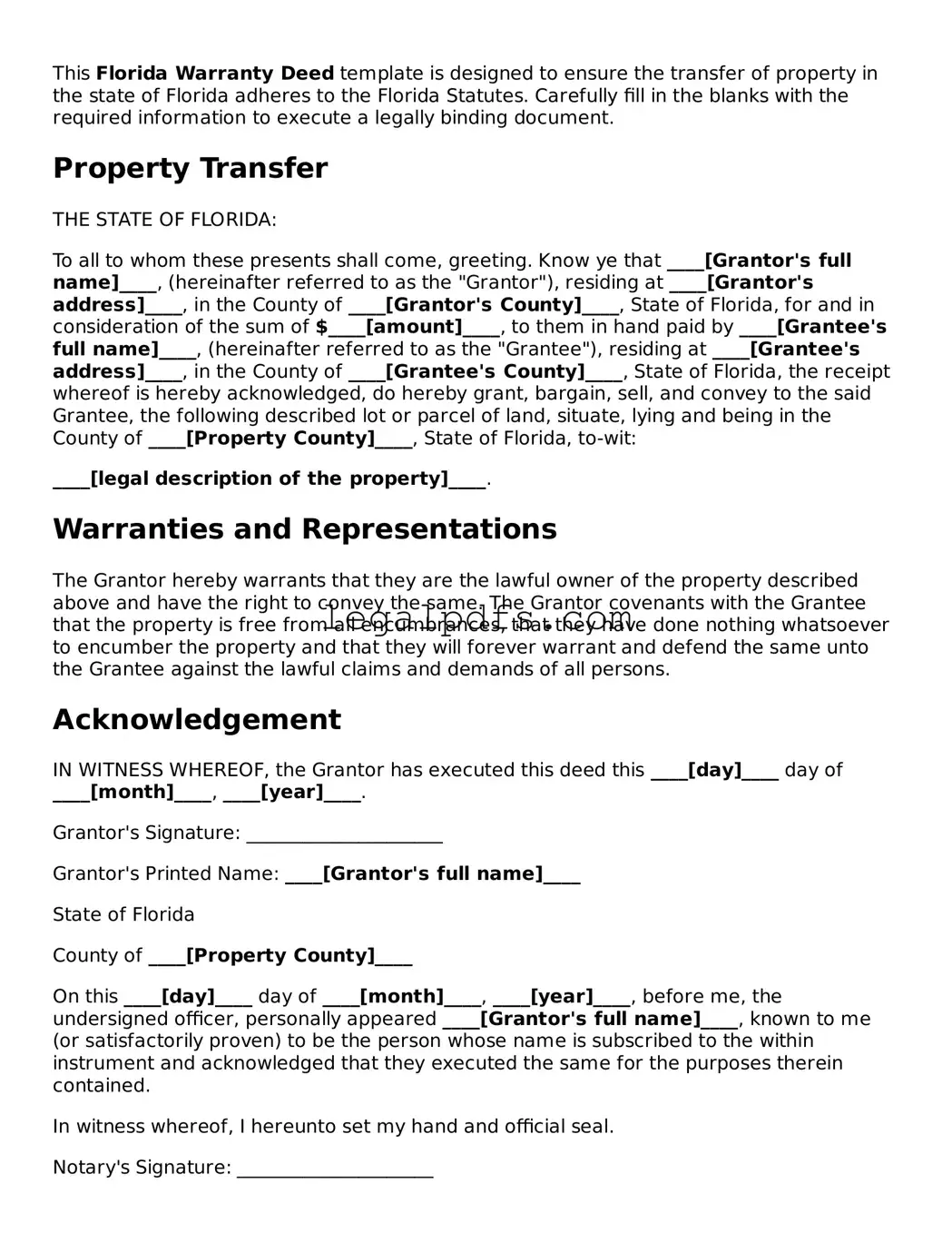This Florida Warranty Deed template is designed to ensure the transfer of property in the state of Florida adheres to the Florida Statutes. Carefully fill in the blanks with the required information to execute a legally binding document.
Property Transfer
THE STATE OF FLORIDA:
To all to whom these presents shall come, greeting. Know ye that ____[Grantor's full name]____, (hereinafter referred to as the "Grantor"), residing at ____[Grantor's address]____, in the County of ____[Grantor's County]____, State of Florida, for and in consideration of the sum of $____[amount]____, to them in hand paid by ____[Grantee's full name]____, (hereinafter referred to as the "Grantee"), residing at ____[Grantee's address]____, in the County of ____[Grantee's County]____, State of Florida, the receipt whereof is hereby acknowledged, do hereby grant, bargain, sell, and convey to the said Grantee, the following described lot or parcel of land, situate, lying and being in the County of ____[Property County]____, State of Florida, to-wit:
____[legal description of the property]____.
Warranties and Representations
The Grantor hereby warrants that they are the lawful owner of the property described above and have the right to convey the same. The Grantor covenants with the Grantee that the property is free from all encumbrances, that they have done nothing whatsoever to encumber the property and that they will forever warrant and defend the same unto the Grantee against the lawful claims and demands of all persons.
Acknowledgement
IN WITNESS WHEREOF, the Grantor has executed this deed this ____[day]____ day of ____[month]____, ____[year]____.
Grantor's Signature: _____________________
Grantor's Printed Name: ____[Grantor's full name]____
State of Florida
County of ____[Property County]____
On this ____[day]____ day of ____[month]____, ____[year]____, before me, the undersigned officer, personally appeared ____[Grantor's full name]____, known to me (or satisfactorily proven) to be the person whose name is subscribed to the within instrument and acknowledged that they executed the same for the purposes therein contained.
In witness whereof, I hereunto set my hand and official seal.
Notary's Signature: _____________________
Notary's Printed Name: ____[Notary's full name]____
Commission Number: ____[Notary's Commission Number]____
My Commission Expires: ____[Notary's Commission Expiration Date]____
